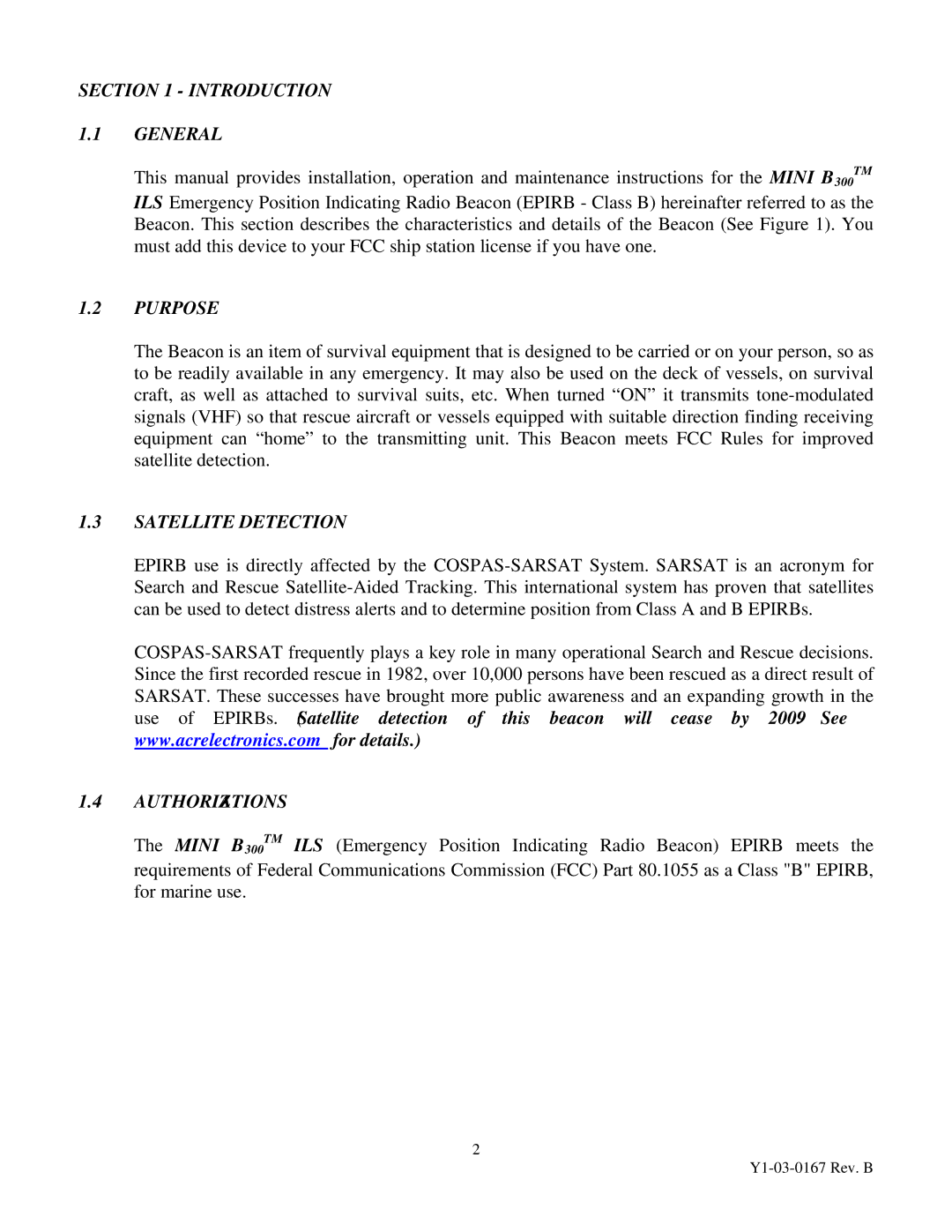SECTION 1 - INTRODUCTION
1.1GENERAL
This manual provides installation, operation and maintenance instructions for the MINI B300TM ILS Emergency Position Indicating Radio Beacon (EPIRB - Class B) hereinafter referred to as the Beacon. This section describes the characteristics and details of the Beacon (See Figure 1). You must add this device to your FCC ship station license if you have one.
1.2PURPOSE
The Beacon is an item of survival equipment that is designed to be carried or on your person, so as to be readily available in any emergency. It may also be used on the deck of vessels, on survival craft, as well as attached to survival suits, etc. When turned “ON” it transmits
1.3SATELLITE DETECTION
EPIRB use is directly affected by the
1.4AUTHORIZATIONS
The MINI B300TM ILS (Emergency Position Indicating Radio Beacon) EPIRB meets the requirements of Federal Communications Commission (FCC) Part 80.1055 as a Class "B" EPIRB, for marine use.
2
